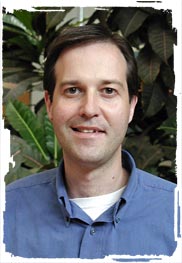New CIMMYT-based maize hybrid released in Colombia
Colombia’s Agriculture and Livestock Research Corporation (CORPOICA) has released a new maize hybrid, CORPOICA PALMIRA H-262, for the country’s Cauca Valley Department. The new single-cross hybrid, which yielded more than 9 tons per hectare on average in tests in the region, was developed using acid-soil-tolerant inbred lines CLA176 and CLA215 from CIMMYT, according to Luis Narro, Center maize researcher in South America.
“This shows how quality breeding materials developed for certain environments—in this case, acid soils—can be successful in a range of settings,” according to Narro, who says that acid-tolerant maize is routinely evaluated for yield potential in locations, such as Cauca Valley, with fertile soils and normal pH.
The new hybrid emerged from tests in Cauca Valley in 2001, with support from the Colombian Ministry of Agriculture, to find a variety that would out-yield available commercial hybrids. CORPOICA and CIMMYT assembled a trial comprising 20 hybrids—17 experimental hybrids from CIMMYT, and 3 commercial checks. “H-262 won out not only for its high yields, but also because it yields well under diverse conditions and has good grain quality: semi-flint type, and good for making the popular food ‘arepas,’ ” Narro says.
Dominated by the river which gives the Department its name and home to nearly 3 million people, the Cauca Valley is the country’s leading sugarcane producer. Farmers there also grow maize on some 20,000 hectares; just over half of it on holdings of less than 30 hectares.
The hybrid was released in February 2006 in a ceremony attended by CORPOICA Director General Arturo Vega, Colombian farmers, researchers, and policymakers. Diego Aristizábal Quintero, Director of CORPOICA’s Palmira facility, thanked CIMMYT and others who contributed to the development of H-262.
“I would like to take this opportunity to recognize CIMMYT’s close and effective collaboration, the participation of FENALCE, and the support of the Ministry of Agriculture, whose funds allowed us to obtain the product that we are proudly turning over today for the benefit of the Valley’s farmers…” At the time of release, 8.2 tons of seed of H-262 were available—enough to sow more than 500 hectares.
 Now that all of CIMMYT’s new program directors have been officially installed, it is time to get acquainted with them, as well as their ideas and plans for the programs. This month we feature Jonathan Crouch, director of the Genetic Resources Program.
Now that all of CIMMYT’s new program directors have been officially installed, it is time to get acquainted with them, as well as their ideas and plans for the programs. This month we feature Jonathan Crouch, director of the Genetic Resources Program.